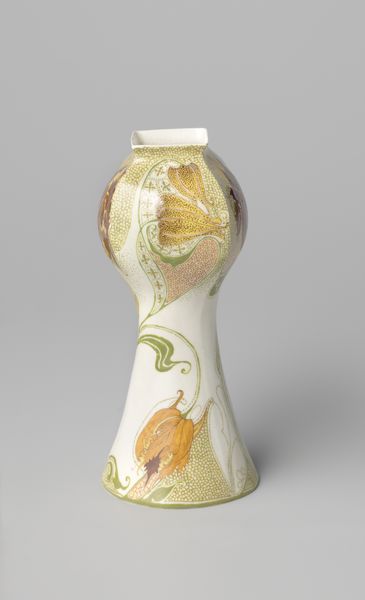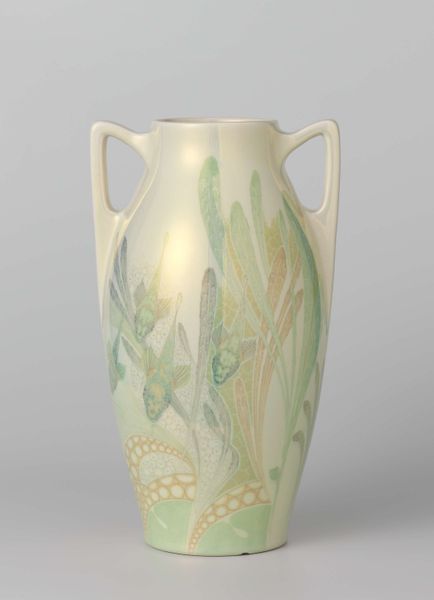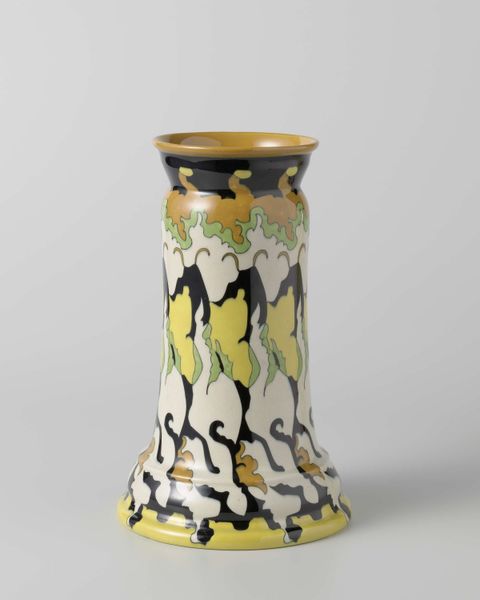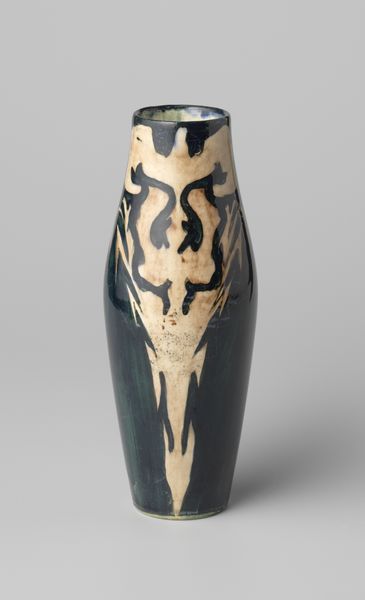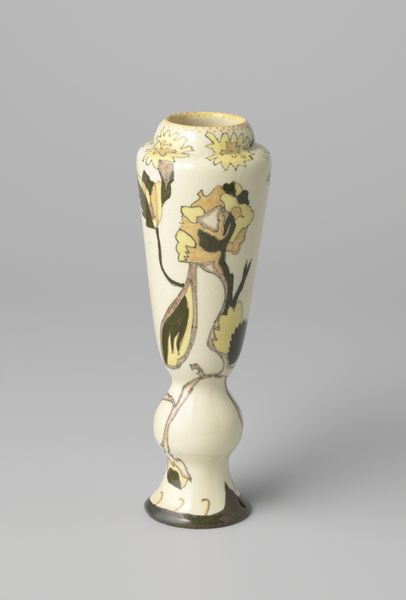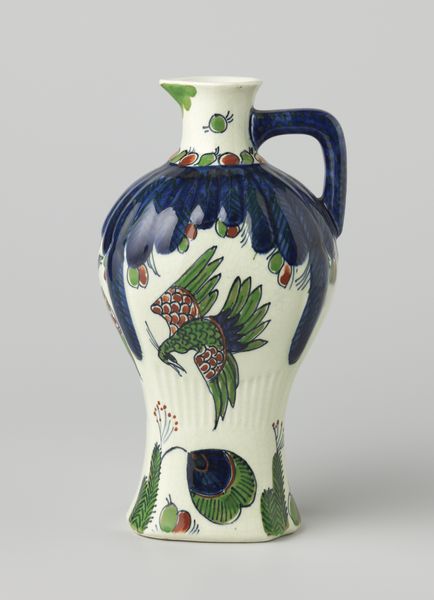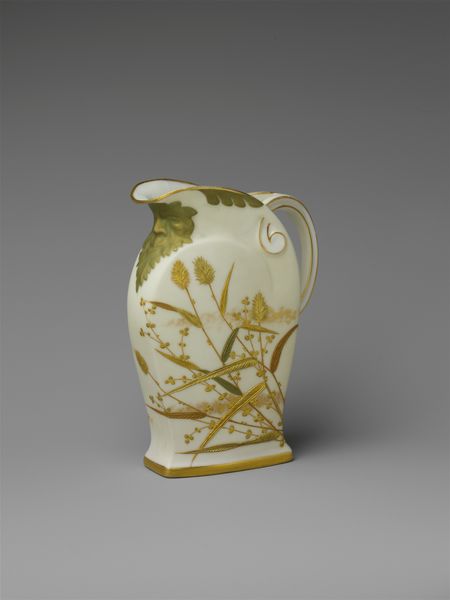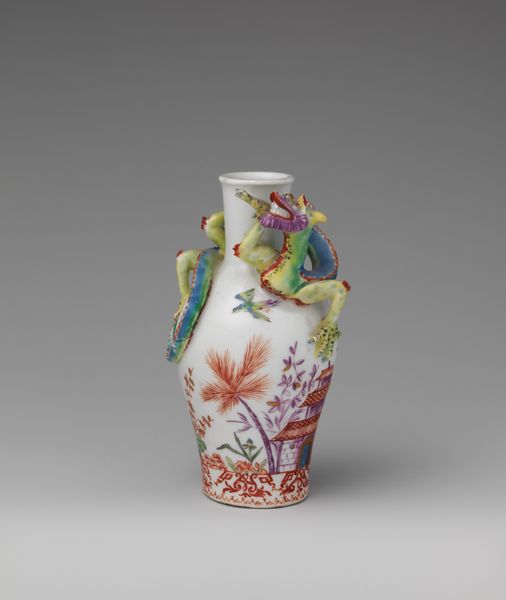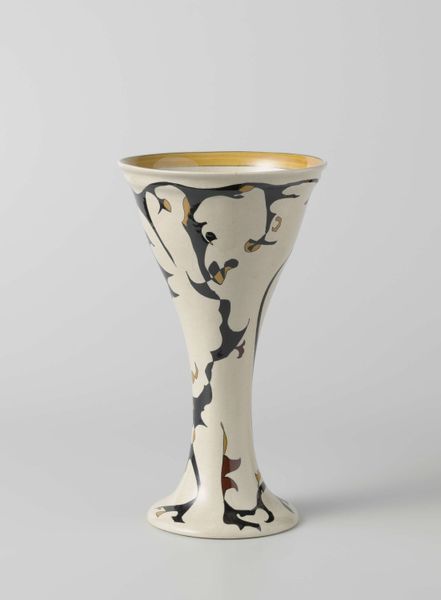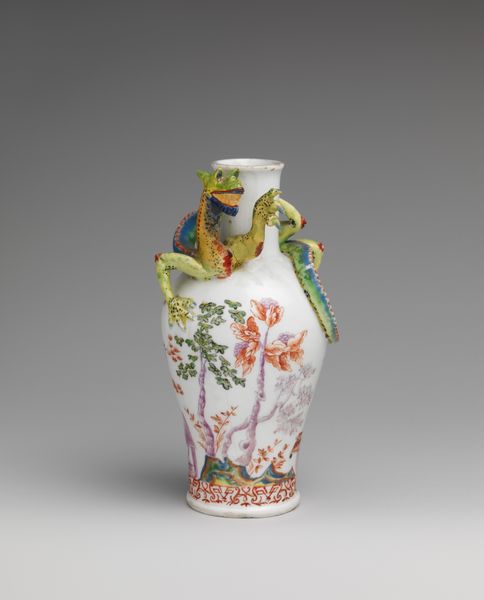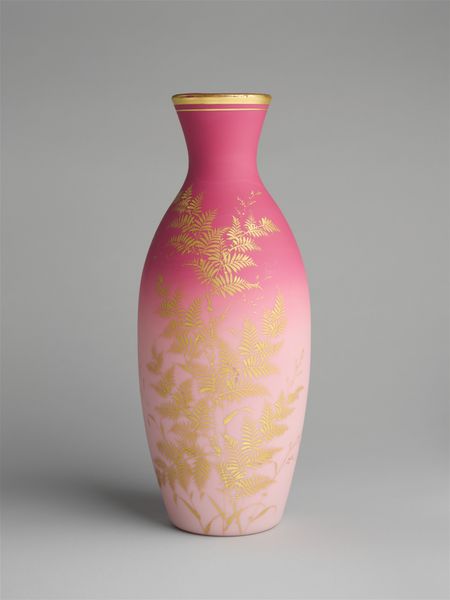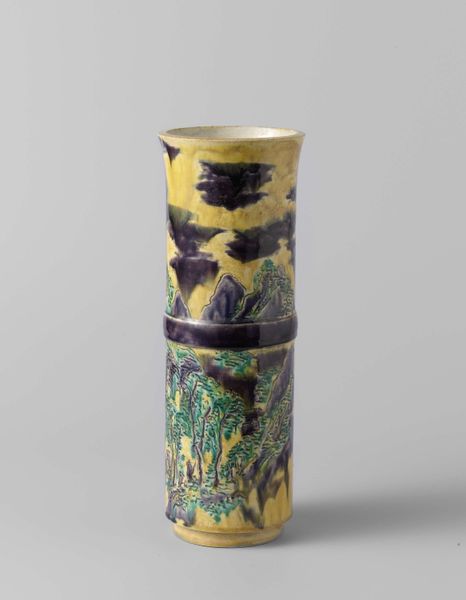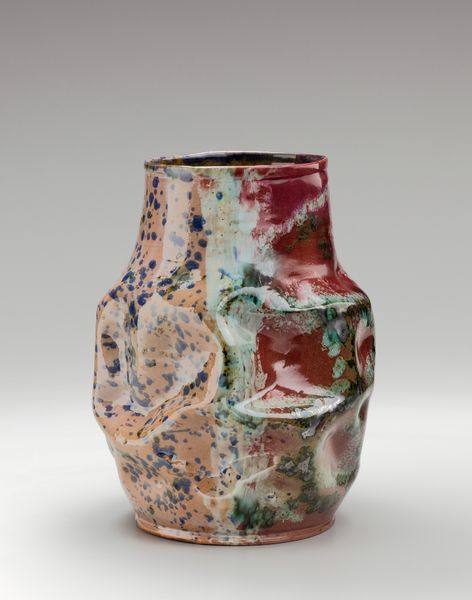
ceramic, glass
#
art-nouveau
#
ceramic
#
glass
#
ceramic
#
decorative-art
Dimensions: height 32.5 cm, diameter 16.2 cm
Copyright: Rijks Museum: Open Domain
Curator: What an intriguing object. We are looking at a glass vase entitled "Vaas met papavers," or Vase with Poppies, created sometime between 1900 and 1914 by Legras & Cie. Editor: My first thought? A little melancholic, but the poppy design really softens it. The muted greens and dusky red evoke a sense of fading beauty. Curator: Well, poppies have long symbolized sleep, peace, and even death. But in the Art Nouveau period, they took on an added dimension, reflecting both decadence and nature's delicate fragility. Editor: It's interesting how that symbolic weight translates into the actual making. This isn't a fleeting painting, but glass—something delicate and yet inherently strong, made with incredible heat and shaped by breath. Do we know much about the glassmaking process used by Legras & Cie? Curator: The process speaks to Art Nouveau ideals. The applied decoration suggests laborious enameling, requiring great skill. But beyond craftsmanship, consider the vase form itself—nature idealized, subtly distorted, a departure from mass-produced symmetry, suggesting individuality. Editor: Absolutely. It resists pure functionality, and yet it invites us to consider functionality. It's a handmade container; this immediately connects to everyday life, breaking down divisions between the decorative and utilitarian arts. Who crafted each element, and under what factory conditions? What kind of consumption was it encouraging? Curator: Yes, tracing the hands and processes behind such pieces is so critical. The stylized poppies echo themes from Romanticism, connecting us to dreams, memories, and fleeting emotion, a link with personal experience across history. Editor: It leaves me pondering not just aesthetics but about the economics of beauty, questioning how art serves or challenges systems of production. Curator: It is more than the appearance; it holds the cultural echo of past lives—labor, materials, and the eternal return of motifs. A fragile container, nonetheless holding much. Editor: And those connections invite a necessary expansion of our understanding of art.
Comments
No comments
Be the first to comment and join the conversation on the ultimate creative platform.
